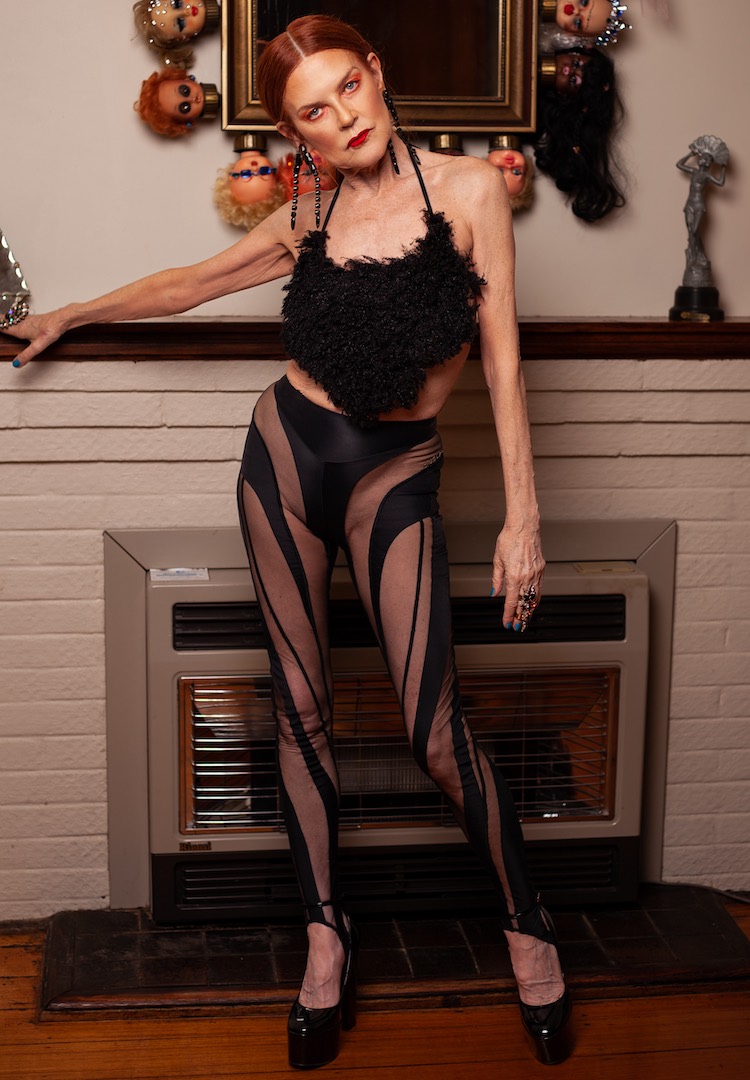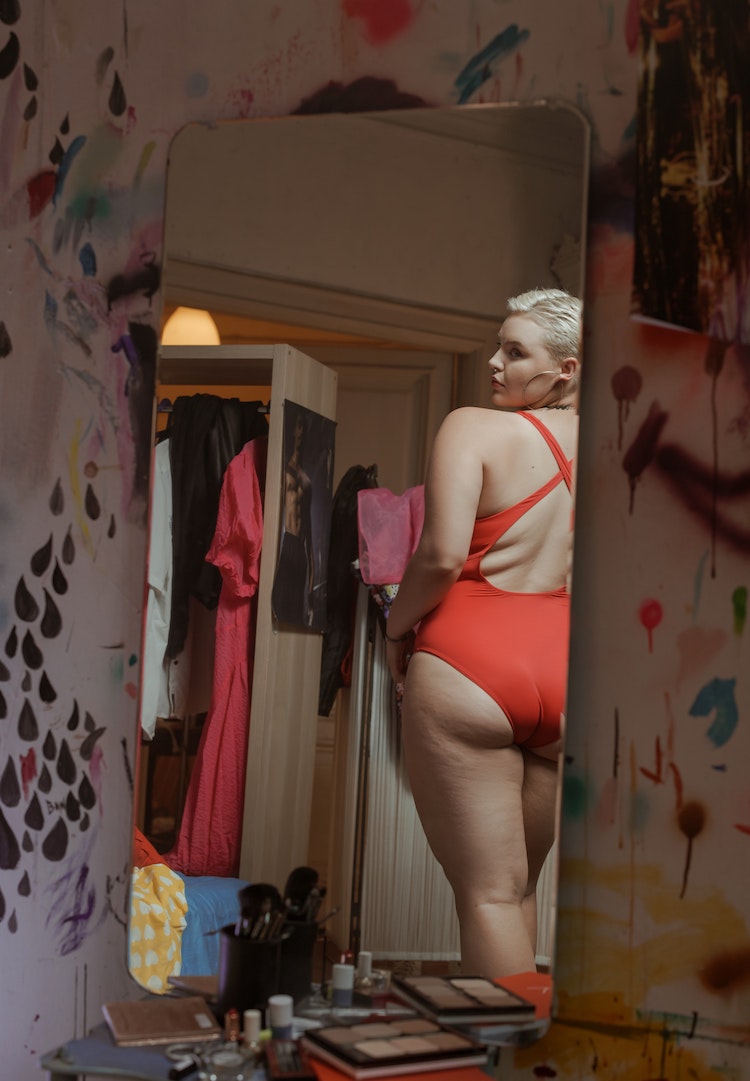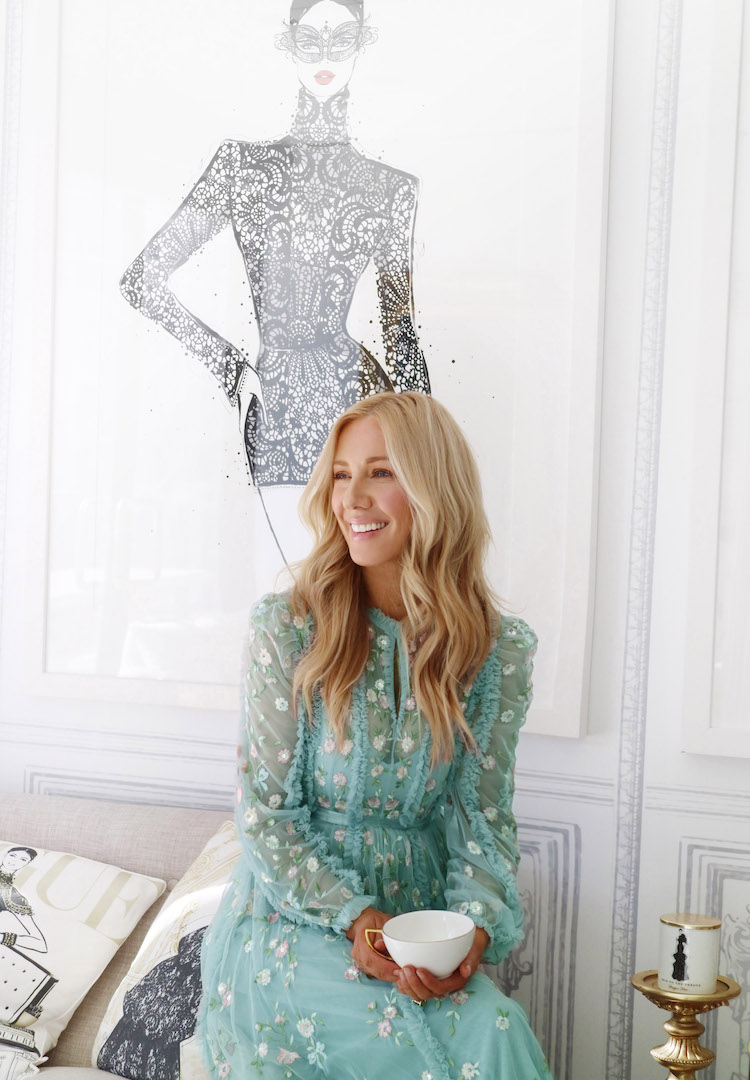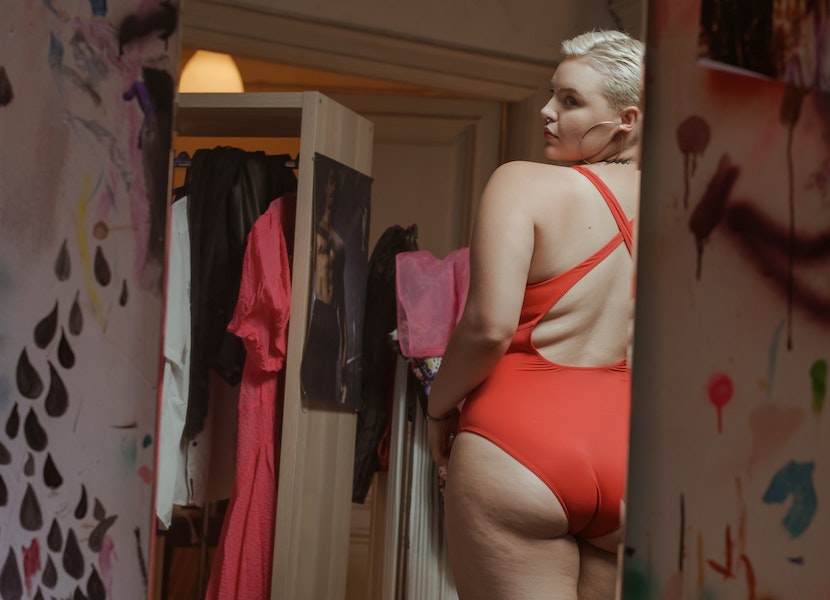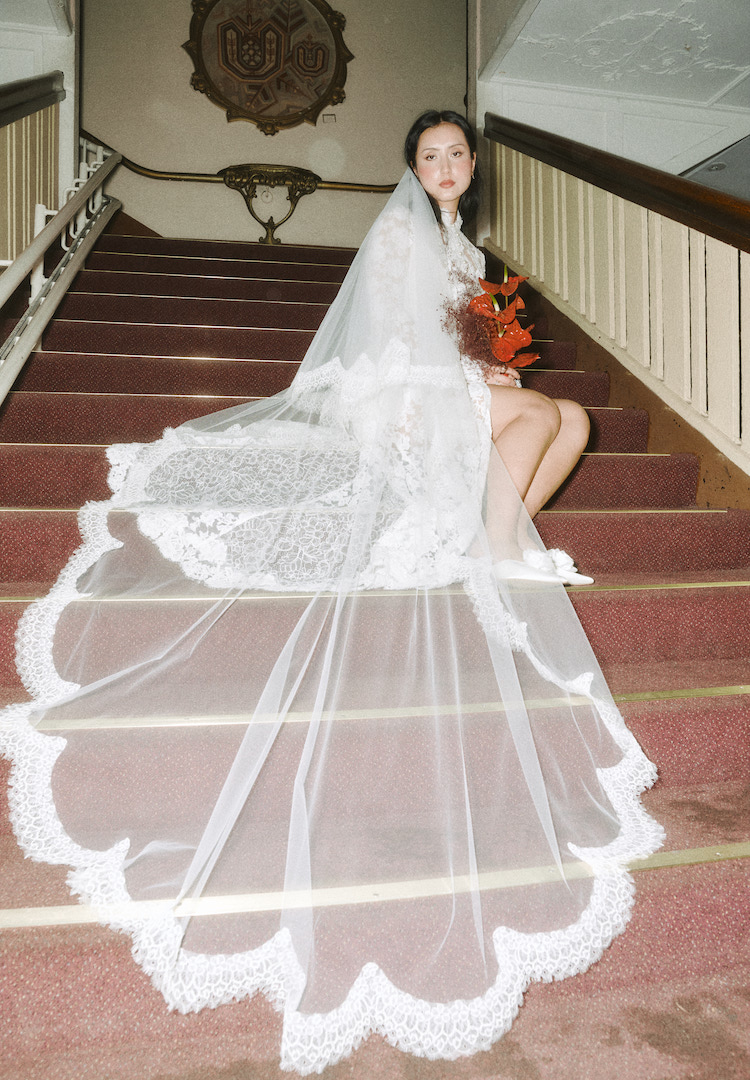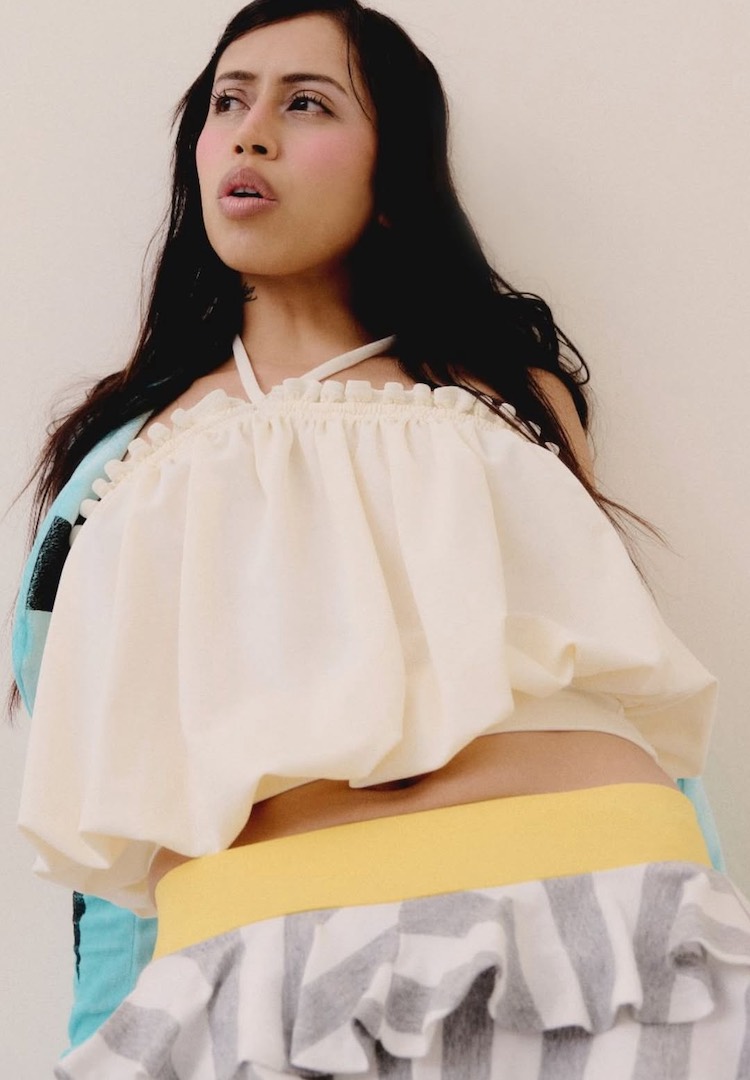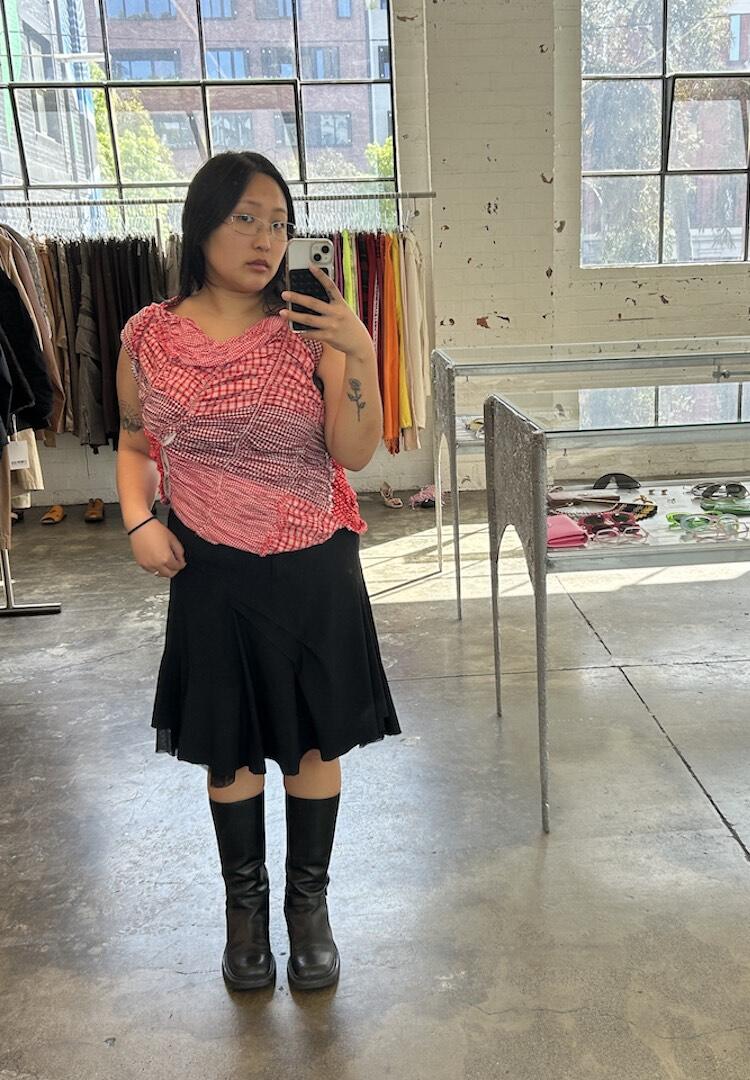I’m sick of seeing ‘body checking’ as a trend in fashion TikToks
WORDS BY CAT FORSYTH
“Among the scores of Miu Miu ballet flats, plaid kilts and low-rise cargo pants I scroll past on my For You Page, there’s a discrete culture of body checking.”
Like pretty much everyone I know, scrolling through TikTok is a part of my daily routine. It used to be my job to do just that, so I know the app pretty well. I love using it to see what my friends and wider circle are up to: what they’re wearing and buying, where they’re eating and drinking (generally an oat iced latte) and I love to share the same things.
I can appreciate the social aspect of TikTok – I’ve even made some lovely IRL friendships thanks to the app. But there’s a darker side to TikTok that I’ve just about had enough of. According to Healthline, body checking is defined as “the habit of seeking information about your body’s weight, shape, size or appearance” and it’s something that generally occurs multiple times a day.
For more fashion news, shoots, articles and features, head to our Fashion section.
It’s a behaviour that often occurs among those suffering from eating disorders, which is why it can potentially become a dangerous habit. And as someone who’s struggled with an eating disorder, I’ve noticed a frightening amount of body-checking on TikTok over the last few years.
The app is rife with exercise, wellness and ‘fitspiration’ influencers and content, and although body checking and unhealthy ideas surrounding food and exercise are commonplace in these videos, I’m most concerned about the way it’s cropping up in other content types.
Because exercise and particularly ‘wellness’ have been massive triggers for my eating disorder in the past, I make sure that I’m always vigilant when on social media. I actively avoid ‘healthy living’ accounts and anything to do with fitness and working out.
But despite avoiding this content, I’ve noticed that negative thoughts have been trickling in lately. I believe this is because, among the scores of Miu Miu ballet flats, plaid kilts and low-rise cargo pants I scroll past on my For You Page, there’s a discrete culture of body checking permeating fashion content.
Miniskirts and how-low-can-you-go pants beg for a flat stomach as an accessory, and ‘outfit checks’ pose as the perfect opportunity to show it off. From ‘get dressed with me’ videos that start with the creator wearing only a bra and undies to ‘fit checks’ that emphasise a toned set of abs, there is something sinister about this trend.
Although these ‘outfit check’ videos seem relatively innocent (and fun for the fashion girlies), the manner in which they highlight smaller body types and promote thinness as a fashion accessory is not just questionable, it’s dangerous.
It’s well known that fixating on your body can lead to negative thoughts and associations, which in turn, can trigger harmful eating disorder behaviours. A study into the association between the two found that “body-checking behaviours… are central to the maintenance of eating disorders”.
On a personal level, I know this is true thanks to the extensive insight I’ve gained through therapy during recovery. This dangerous trend encourages viewers to analyse and criticise their own bodies – in my experience, each fit check leaves me questioning my eating disorder recovery.
The pattern I’ve noticed is that each outfit video that highlights physical features like a flat stomach makes me worry about how I look and leaves me itching to look in a mirror and check my own body.
I realised recently that scrolling through TikTok no longer made me feel happy and in touch with my friends. Rather, I felt weighed down by self-doubt and a niggling anxiety. I hate the feeling of questioning my own recovery, so I knew I needed to take action. Otherwise, I would just be engaging in the toxic cycle that allows my eating disorder to thrive.
Wanting to change how I was feeling, I decided I needed to ‘clean up’ my feed and remove the negativity. Here’s how I made TikTok safe and enjoyable for myself – and how you can too.
Physically get away from your phone
This is the easiest one to start with. If you’re doom-scrolling into a spiral of distress, put your phone down and walk away from it. You can’t engage with the triggering content if you’re not looking at it.
Unfollow creators that don’t make you feel good
If there are creators out there who make content that you find upsetting, unfollow them. That’s it. This particularly applies if you watch certain videos and creators to intentionally trigger yourself.
Alter what content you consume
This will take a little while and it’s not easy, but the key is not to engage with content that upsets you. If you see something distressing in a video, rather than rewatching, liking and reading the comments, scroll straight past.
The more you engage with any type of content, the more it will appear on your For You Page. If you remove yourself from triggering videos and disengage, they will begin to appear in your feed less and less.
Only look at the ‘Following’ page on TikTok
I started doing this recently and noticed a major improvement in my emotional engagement with the app. I watch videos of people I follow because I have curated my Following page to be full of people I know personally, or creators whose content makes me feel comfortable. To do this, just swipe to the Following side of your feed on TikTok.
Remember to practise self-care and love
Probably the most important (and the hardest) part of this process is choosing to engage in positive self-talk and show yourself some love. Whether you do this by making a cup of tea, cuddling your pet or buying yourself an (insert chosen alternative milk here) iced latte, you need to take care of yourself just like you would someone else.
If you’re struggling with body image issues or eating disorders, you can call the Butterfly National Helpline at 1800 33 4673 for free and confidential support, or email or chat to them online here.

